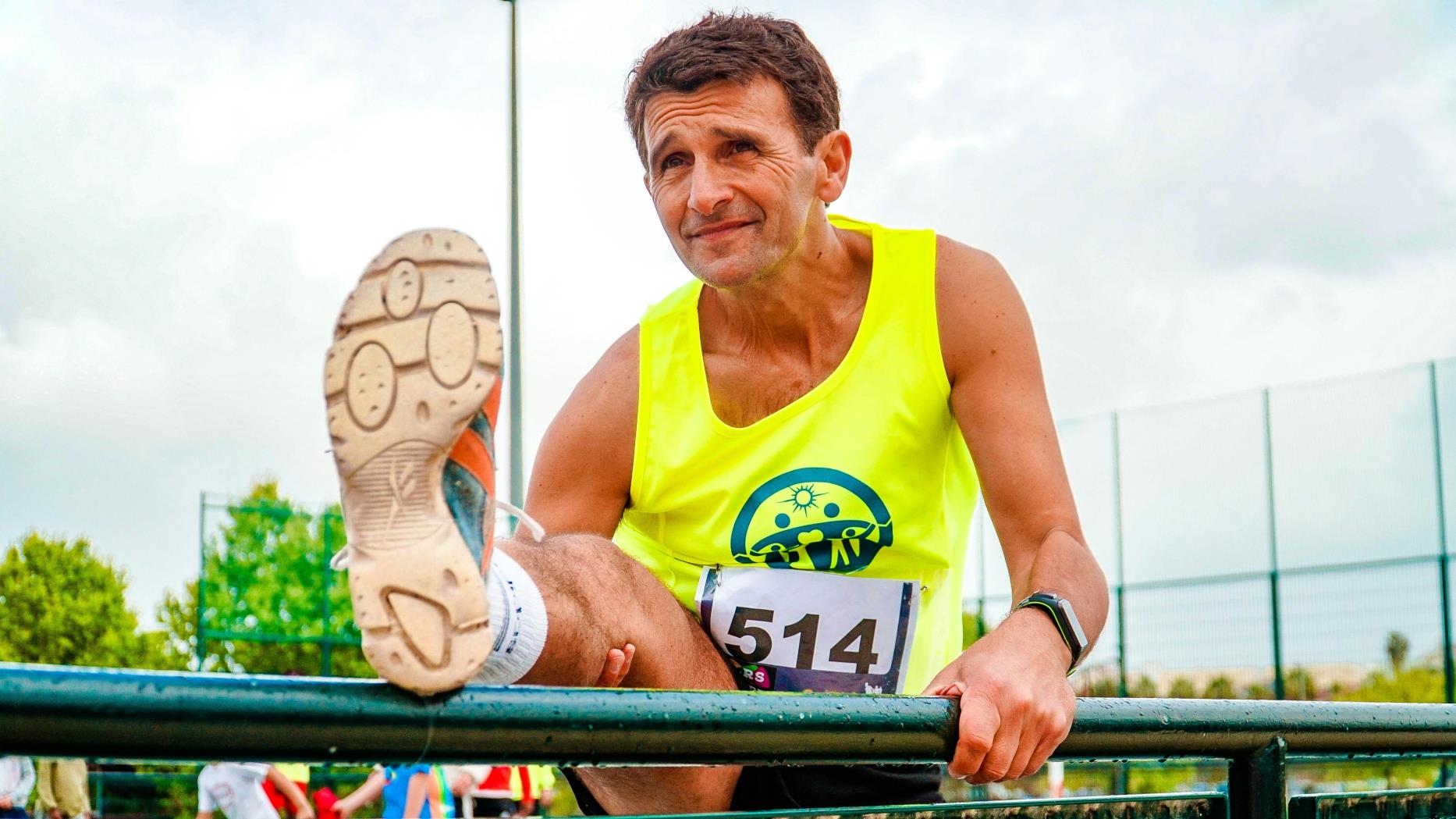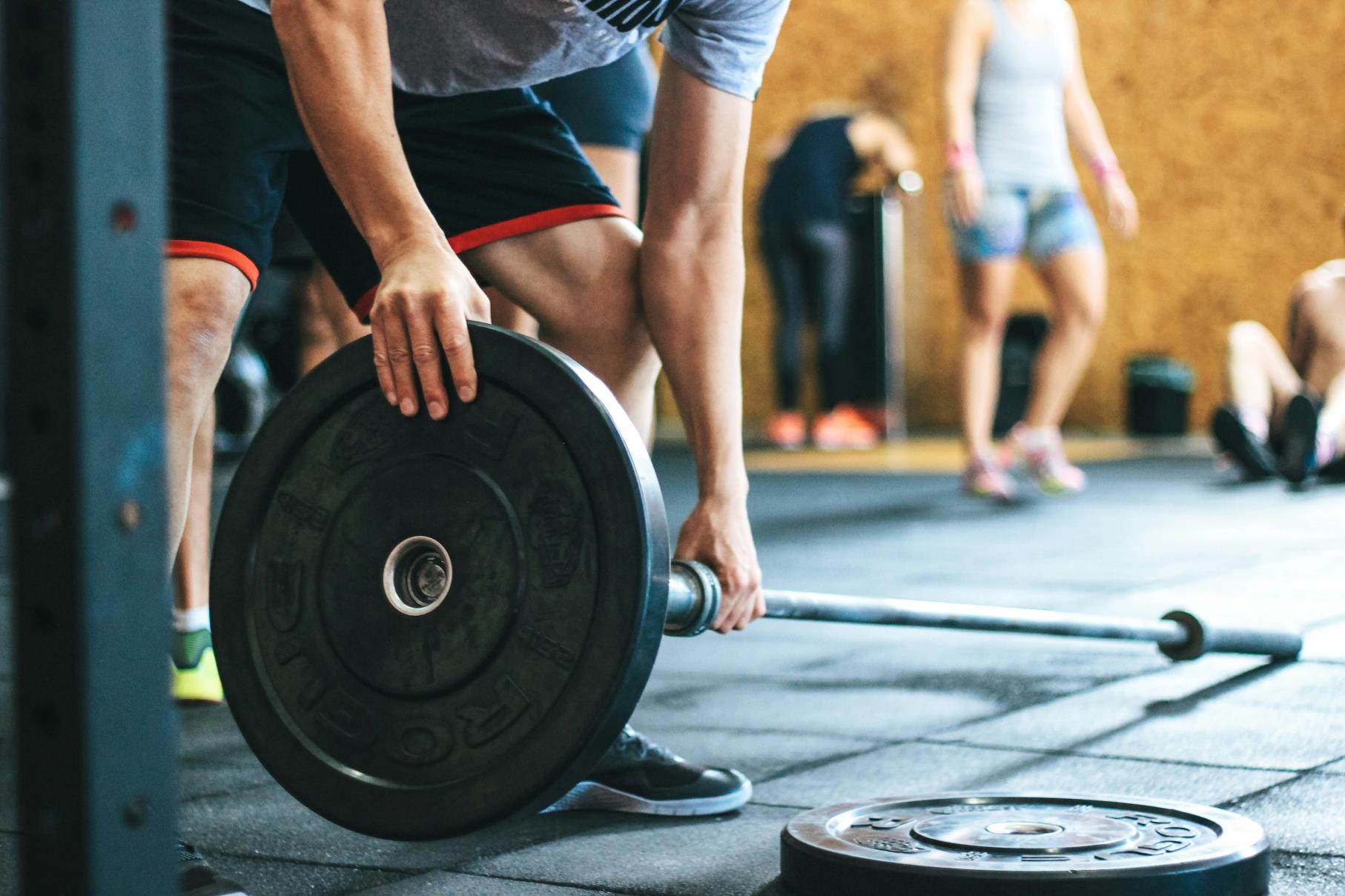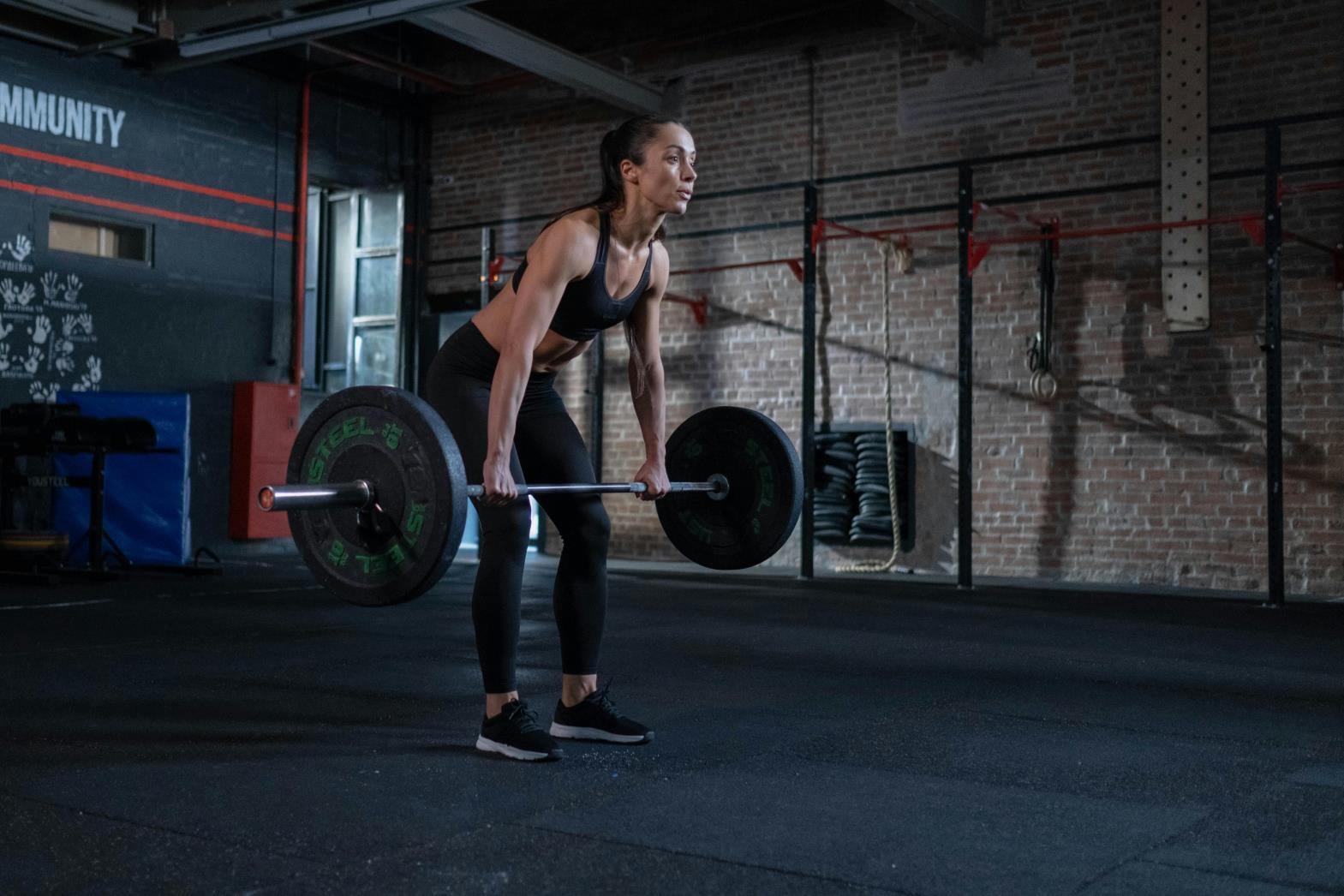What is the best exercise as you get older? Endurance or strength work?
 Karen Parnell
May 21, 2022
Karen Parnell
May 21, 2022
What is the best exercise as you get older? Endurance or strength work?
As we get older the temptation is to go for longer training sessions or target longer distance races as our fast twitch (Type 2) muscle get ratio relative to slow-twitch declines, whereas the Type 1 muscle largely remains the same [1]. This means your strength and power capabilities decline more than your endurance skills as the years pass.
You may want to do well at your chosen sport so changing from 5k runs to 10k runs and longer seems to feel right - but is this the best for our long term health and fitness?
We know that we all lose muscle mass over time after the age of 30 [2]. We also know that as our hormone balance and levels change as we get older we can start to store more fat around our mid-section. Again long, slow runs, swims or bike rides burn fat and make sense don't they? Well lets take a look at this in detail.

Photo by RUN 4 FFWPU
From the time you are born to around the time you turn 30, your muscles grow larger and stronger. But at some point in your 30s, you begin to lose muscle mass and function, a condition known as age-related sarcopenia or sarcopenia with aging. People who are physically inactive can lose as much as 3% to 5% of their muscle mass per decade after age 30. Even if you are active, you will still experience some muscle loss.
Although there is no generally accepted test or specific level of muscle mass for sarcopenia diagnosis, any loss of muscle mass is of consequence, because loss of muscle means loss of strength and mobility. Sarcopenia typically accelerates around age 75 - although it may happen in people age 65 or 80 - and is a factor in the occurrence of frailty and the likelihood of falls and fractures in older adults.

Photo by Victor Freitas
Get your FREE 23 page guide to Strength and Conditioning
Symptoms and Causes of Sarcopenia
Symptoms of muscle loss include musculoskeletal weakness and loss of stamina, which can interfere with physical activity. Reduced physical activity, in turn, further reduces muscle mass.
Although sarcopenia is mostly seen in people who are inactive, the fact that it also occurs in people who stay physically active throughout life suggests there are other factors involved in the development of sarcopenia.
Researchers believe the following factors play a role:
- Age-related reduction in nerve cells responsible for sending signals from the brain to the muscles to initiate movement
- A decrease in the concentrations of some hormones, including growth hormone, testosterone, and insulin-like growth factor
- A decrease in the body's ability to synthesize protein
- Inadequate intake of calories and/or protein to sustain muscle mass

Photo by Alex Kinkate
Get your FREE 23 page guide to Strength and Conditioning
Treatments for Sarcopenia
The primary treatment for sarcopenia is exercise.
Specifically, resistance training or strength training - exercise that increases muscle strength and endurance with weights or resistance bands - has been shown to be useful for both the prevention and treatment of sarcopenia.
Resistance training has been reported to positively influence the neuromuscular system, hormone concentrations, and protein synthesis rate. Research has shown that a program of progressive resistance training exercises can increase protein synthesis rates in older adults in as little as two weeks.
For optimal benefits with minimal risk of injury, the proper number, intensity, and frequency of resistance exercise is important. For that reason, you should work with an experienced physical therapist or personal trainer to develop an exercise plan.

Photo by cottonbro studio
Get your FREE Strength and Conditioning 7-day plan here.
Going Long - the Benefits and Risks of Endurance Sessions
Going for long endurance runs can burn more fat but can also destroy muscle if the body does not have enough carbohydrate fuel to use during training. In extreme cases the body needs to turn to its own protein in the muscles themselves to fuel your activity when glycogen or carbohydrate stores are depleted, your body will turn to the only fuel source left - amino acid proteins in your skeletal muscles - and turn them into glucose for fuel. So remember to fuel up before that long run!
Also as we get older this is what athletes tend to do to keep fit and compete at a level where personal bests are still achievable. It's True: long distance runners, particularly professional athletes, don't have fat weighing down their performance. You also notice they possess little muscle mass as well. Why? The body uses both muscle and fat for long-distance fuel.
Over time, distance runners drop overall weight, both muscle and fat. But muscle depletion slows the metabolic rate, which ultimately slows down your fat loss!

Get your FREE Trail Running Training Plan
Finding Time to Train Effectively
Jogging starts slow. The first attempt might be 10 minutes, then 15, 20, 25, 30, 40 … up to roughly one hour or longer. At that point, people plateau, may become bored and stop. Those who continue encounter a problem: time restriction.
Most runners set aside an hour away for exercise - some a bit longer, some a bit less. People often don't have extra time, so they're forced to manipulate other variables.
For example, they might run on an incline to make the session more difficult and target different muscle groups, or sprint short distances instead of jogging for time.
Get your FREE Mobility Challenge
Elevating Your Metabolism
Anaerobic (without oxygen) training through strength and resistance is better for fat loss than aerobic jogging. Anaerobic training speeds the metabolism and keeps or enhances lean muscle mass.
Long-distance running can lead to fat loss, but it's not great on its own. Different methods need to be implemented for people who tend to work for long periods at a desk. Modern living unfortunately doesn't allow for hours and hours of running.
One way is to elevate your metabolic rate through anaerobic regimens carried out in short periods of time. Long-distance cardio has various health benefits, but it should be done with less frequency and paired with resistance training.
Consider switching one of your long distance runs with one of these protocols:
- Tabata Training or High Intensity Interval Training (HIIT) like Metafit - provides the equivalent of a 2 hour low intensity workout in 30 minutes. 30min High Intensity Interval Training (HIIT).
HIIT workouts will burn calories during exercise and some studies have shown an afterburn effect. The afterburn effect, also known as excess post-exercise oxygen consumption (EPOC), refers basically to the increased quantity of calories burned after exercise.
Physical activity increases muscles' demand for oxygen (VO2), which oxidizes carbohydrates and fats, producing the energy required for movement. Some studies have shown this elevated calorie burn can last up to 24 hours but it more typically 2-3 hours. [3]
- Circuit Training - combines strength and cardio training that normally lasts 30-45 minutes.
- Resistance Training - builds strength, power, tone and endurance with very few exercises.
Get your FREE Strength and Conditioning 7-day plan here.
Would you like a free training plan or recipe book? Here's a link to some free resources to help you with your training.
Conclusion: Exercising as you get Older
In conclusion, the decision between resistance training and endurance training as one ages is not a matter of choosing one over the other, but rather understanding the unique benefits each modality offers and integrating them into a comprehensive fitness regimen.
While resistance training is paramount for combating sarcopenia and maintaining muscle mass, endurance training plays a vital role in enhancing cardiovascular health and overall stamina.
Additionally, the incorporation of High-Intensity Interval Training (HIIT) can provide a time-efficient means of reaping the benefits of both resistance and endurance training, offering improvements in muscle strength, cardiovascular fitness, and metabolic health.
As individuals age, prioritizing regular physical activity that encompasses a balance of resistance, endurance, and HIIT exercises becomes increasingly crucial for preserving functional independence and overall well-being. Therefore, a holistic approach that combines elements of resistance, endurance, and HIIT training stands as the most effective strategy for promoting healthy aging and optimizing physical function in later life.
It's extremely important that we maintain muscle mass as we get older to avoid getting weaker and it will keep us mobile and able to do simple things like get up off the floor, walk up stairs and even carry home our weekly shopping!
Karen Parnell is a Level 3 British Triathlon and IRONMAN Certified Coach, 8020 Endurance Certified Coach, WOWSA Level 3 open water swimming coach and NASM Personal Trainer and Sports Technology Writer.
Karen is currently studying for an MSc in Sports Performance Coaching at the University of Stirling.
Need a training plan? I have plans on TrainingPeaks and FinalSurge:
I also coach a very small number of athletes one to one for all triathlon and multi-sport distances, open water swimming events and running races, email me for details and availability. Karen.parnell@chilitri.com
Get your FREE Guide to Running Speed and Technique
Get your FREE Swim Workouts for Triathletes E-book
Get your FREE Open Water Swimming Sessions E-Book
FAQ: Best exercises for older triathletes to reduce the risk of bone and muscle wastage
1. Why is exercise important for older triathletes to reduce the risk of bone and muscle wastage?
As we age, the risk of bone and muscle wastage, including the age-related condition called sarcopenia (loss of muscle mass and strength), increases. Exercise plays a crucial role in mitigating these risks by promoting bone health, preserving muscle mass, improving strength and power, and enhancing overall functional capacity.
2. What are the best exercises for older triathletes to address bone and muscle wastage, including sarcopenia?
- Strength training: Strength exercises become even more crucial for older triathletes to counteract muscle wastage. Focus on resistance exercises that target major muscle groups, such as squats, deadlifts, lunges, push-ups, rows, and overhead presses. Gradually increase resistance and intensity over time.
- Endurance training: Maintain cardiovascular fitness through regular endurance training activities like swimming, cycling, and running. These exercises promote heart health, enhance endurance capacity, and contribute to overall well-being.
- High-intensity interval training (HIIT): Incorporate interval training sessions into your workouts, alternating between periods of high-intensity effort and recovery. HIIT has been shown to be particularly effective in improving aerobic capacity and muscle strength for older athletes.
- Balance and stability exercises: Perform exercises that challenge balance and stability, such as single-leg stands, tandem walking, heel-to-toe walk, and yoga poses. These exercises enhance proprioception, coordination, and reduce the risk of falls, which becomes increasingly important as we age.
- Flexibility exercises: Prioritize stretching exercises or activities like yoga or Pilates to maintain joint mobility and flexibility. This helps improve posture, range of motion, and overall mobility, reducing the risk of injuries and enhancing performance.
- Core exercises: Include exercises that target the core muscles, such as planks, bridges, and rotational exercises. A strong core helps maintain stability, improves posture, and supports overall body mechanics during triathlon activities.
3. How often should older triathletes exercise?
The frequency and duration of exercise will depend on individual factors such as fitness level, overall health, and training goals. Aim for a combination of cardiovascular exercise, strength training, and flexibility exercises. In general, strive for at least 150 minutes of moderate-intensity aerobic activity per week, along with two or more days of strength training. Be sure to include rest and recovery days in your training schedule to allow your body to repair and adapt.
4. Are there any specific considerations for older triathletes?
Older triathletes should take the following considerations into account:
- Prioritize recovery: Allow ample time for recovery and rest between workouts to avoid overtraining and reduce the risk of injury. Recovery becomes increasingly important as we age to support the body's repair and adaptation processes.
- Seek professional guidance: Consult with a coach, trainer, or healthcare professional experienced in working with older athletes to design a training program tailored to your specific needs and goals.
- Listen to your body: Pay attention to any pain or discomfort during exercise. Modify exercises or seek advice if something causes persistent pain or discomfort.
- Adequate nutrition: Support your exercise routine with a balanced diet that includes sufficient protein to promote muscle maintenance and repair.
5. Can older triathletes still participate in triathlon events?
Absolutely! Many older adults continue to participate and excel in triathlon events. It's important to work closely with a coach or trainer to design a training program that considers your age, fitness level, and any specific health considerations. Adjustments may be necessary in terms of training volume, intensity, and recovery periods to accommodate your needs.
6. What is sarcopenia?
Sarcopenia refers to the age-related loss of muscle mass, strength, and function. It is a natural process that typically begins around the age of 30 and accelerates after the age of 50, although it can vary among individuals.
7. What are the symptoms of sarcopenia?
Symptoms of sarcopenia may include decreased muscle mass, weakness, reduced physical performance, difficulty performing daily activities, and an increased risk of falls and fractures.
8. What causes sarcopenia?
Sarcopenia is caused by a combination of factors, including aging, hormonal changes, decreased physical activity, inadequate nutrition, chronic illnesses, and inflammation. Genetics and lifestyle factors also play a role in its development.
9. Who is at risk of developing sarcopenia?
While sarcopenia is more common in older adults, it can affect individuals of any age. Factors that increase the risk of sarcopenia include aging, sedentary lifestyle, poor nutrition, chronic diseases, hormonal changes, and certain medications.
10. How is sarcopenia diagnosed?
Sarcopenia is typically diagnosed based on a combination of clinical assessment, physical performance tests, and imaging studies such as dual-energy X-ray absorptiometry (DXA) or magnetic resonance imaging (MRI) to measure muscle mass and strength.
11. Can sarcopenia be prevented?
While sarcopenia is a natural part of aging, its progression can be slowed or prevented through regular physical activity, especially resistance training, adequate protein intake, a balanced diet rich in nutrients, and maintaining overall health and wellness.
12. What are the treatment options for sarcopenia?
Treatment for sarcopenia often involves a combination of exercise, nutrition, and lifestyle modifications. Resistance training, endurance exercise, and high-protein diets are commonly recommended to preserve muscle mass and strength. In some cases, medications or hormone replacement therapy may be prescribed.
13. Is sarcopenia reversible?
While sarcopenia cannot be completely reversed, its progression can be slowed, and muscle mass and strength can be preserved or improved through appropriate interventions, including exercise, nutrition, and medical treatment.
14. Can sarcopenia lead to other health problems?
Yes, sarcopenia is associated with an increased risk of various health problems, including falls, fractures, functional decline, disability, loss of independence, and a higher risk of mortality.
15. How can I prevent or manage sarcopenia as I age?
To prevent or manage sarcopenia, it is essential to maintain an active lifestyle, engage in regular exercise, especially resistance training, consume an adequate amount of protein and essential nutrients, manage chronic conditions, and prioritize overall health and wellness throughout life. Consulting with a healthcare professional or registered dietitian can also provide personalized guidance and support.
Remember, it's never too late to start or continue exercising. Regular physical activity, combined with appropriate training and recovery strategies, can significantly enhance the well-being, performance, and longevity of older triathletes.
References
[1] J Gerontol A Biol Sci Med Sci. 1995 Nov;50 Spec No:11-6. Human aging, muscle mass, and fiber type composition.
[2] Karakelides H, Sreekumaran NK. Sarcopenia of aging and its metabolic impact. Curr Top Dev Biol. 2005;68:123-48.
[3] J LaForgia, Effects of exercise intensity and duration on the excess post-exercise oxygen consumption
#traithlontrainingplans #runningtrainingplans #swimmingtrainingplans #triathlon #swimming #cycling #running
